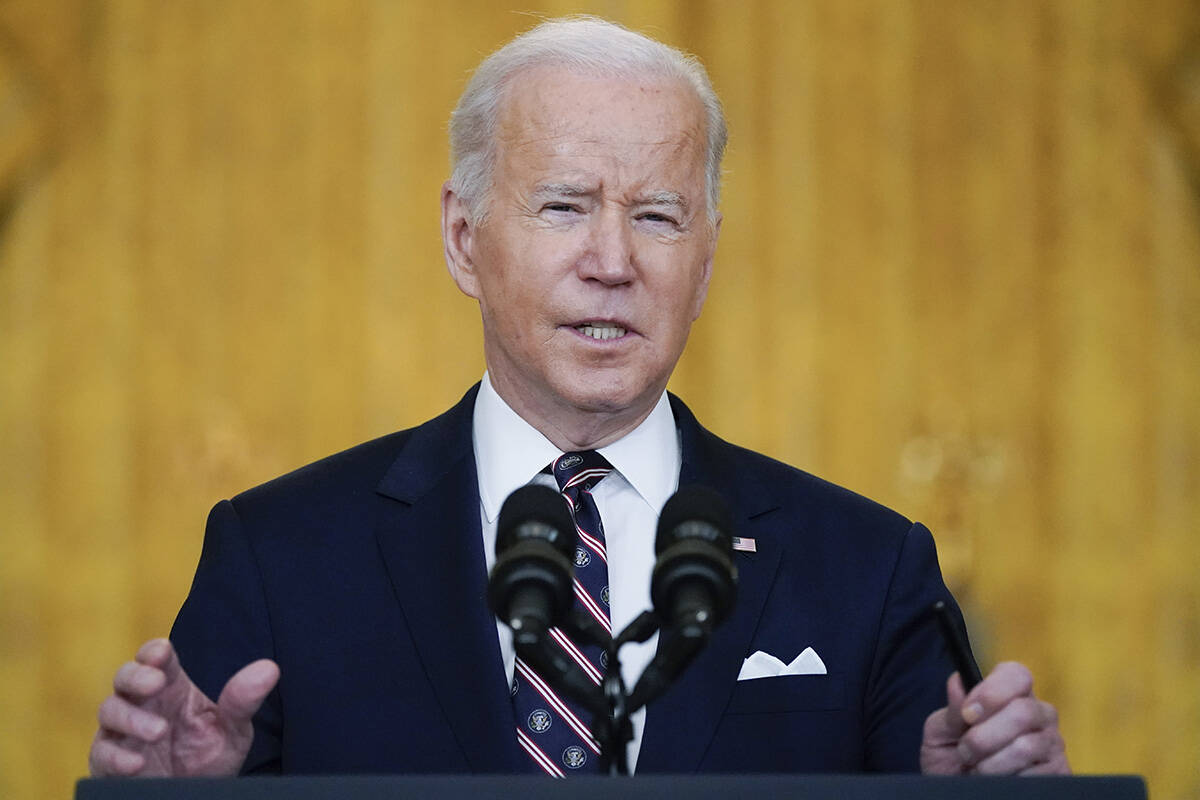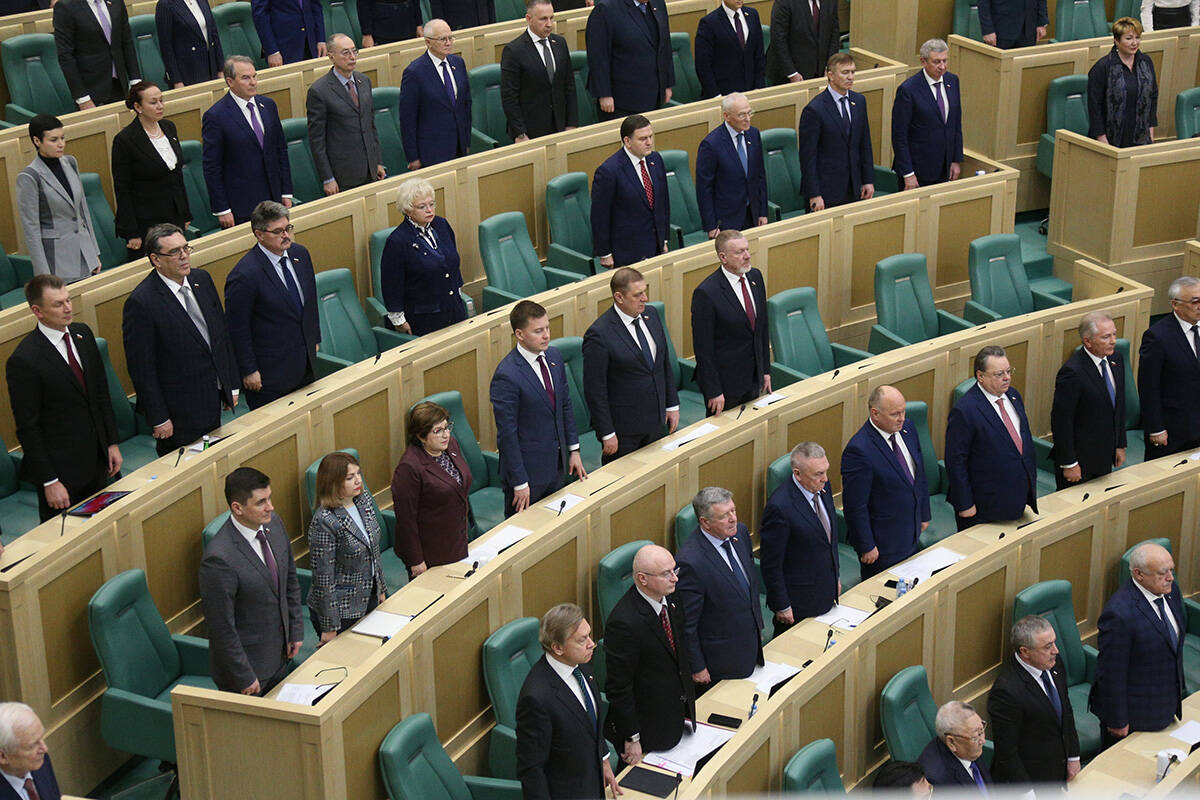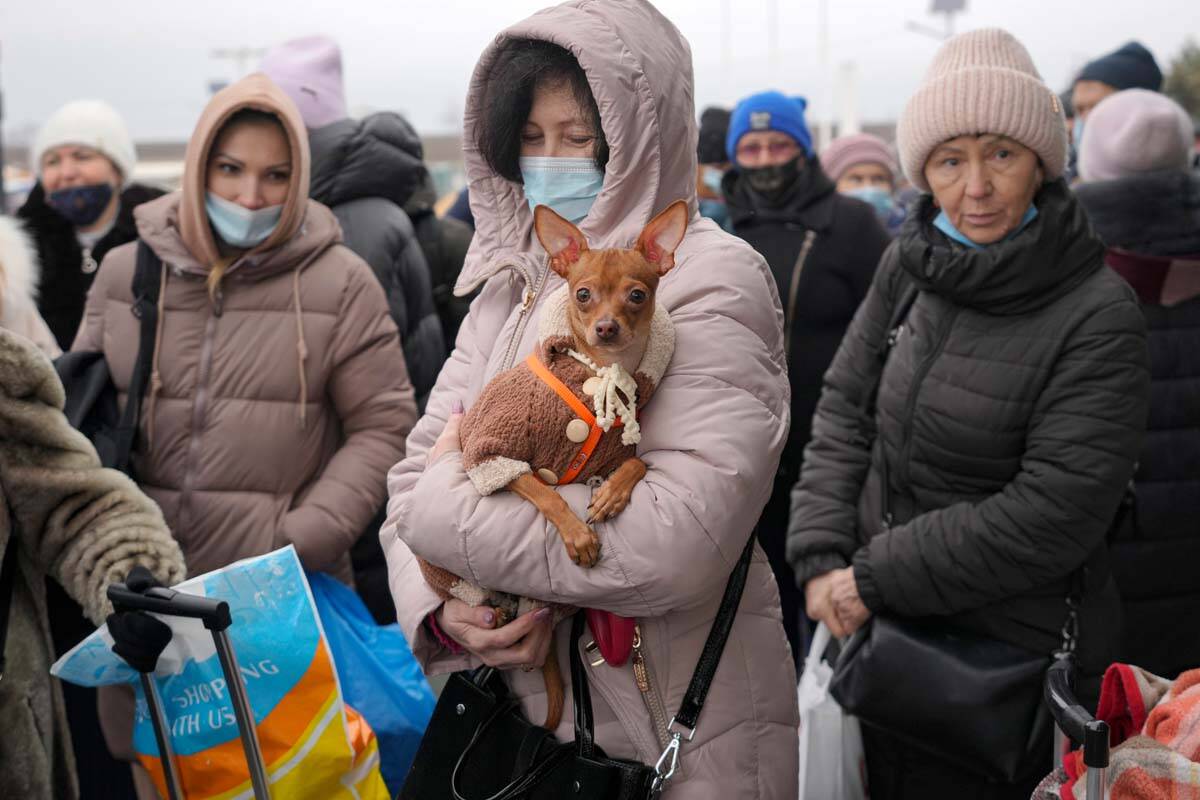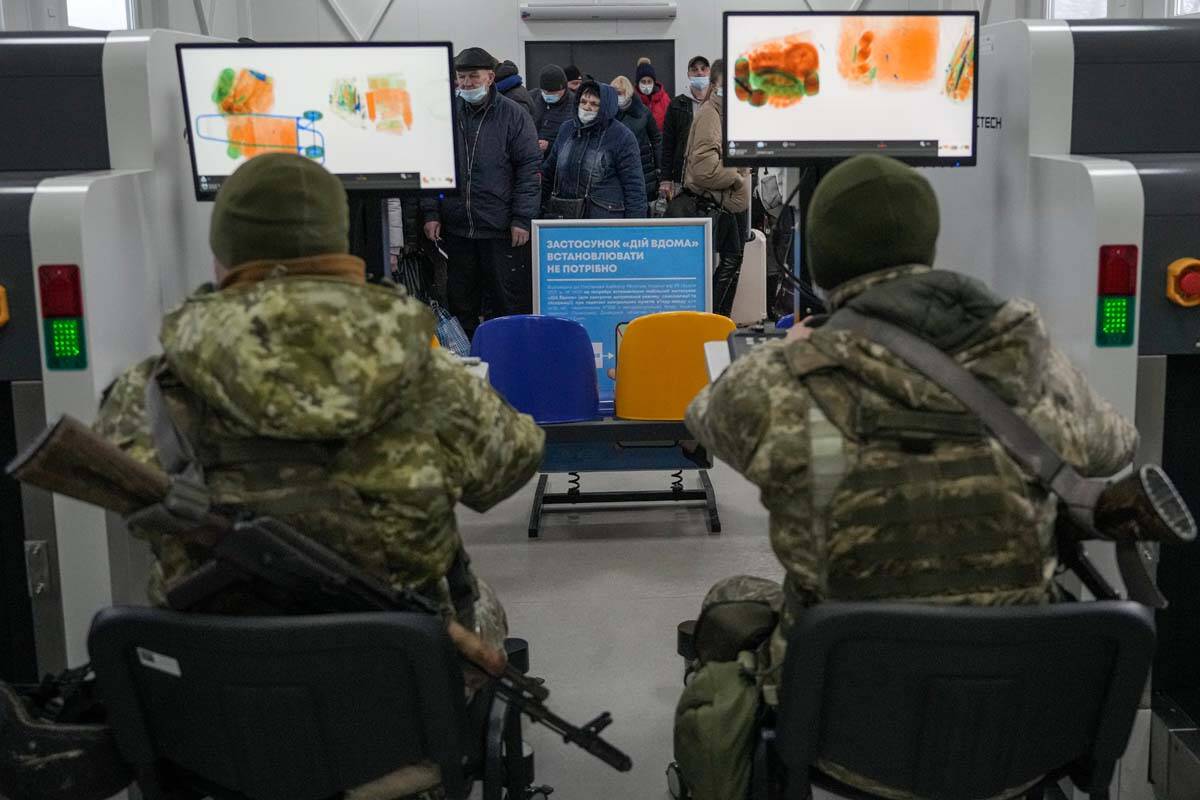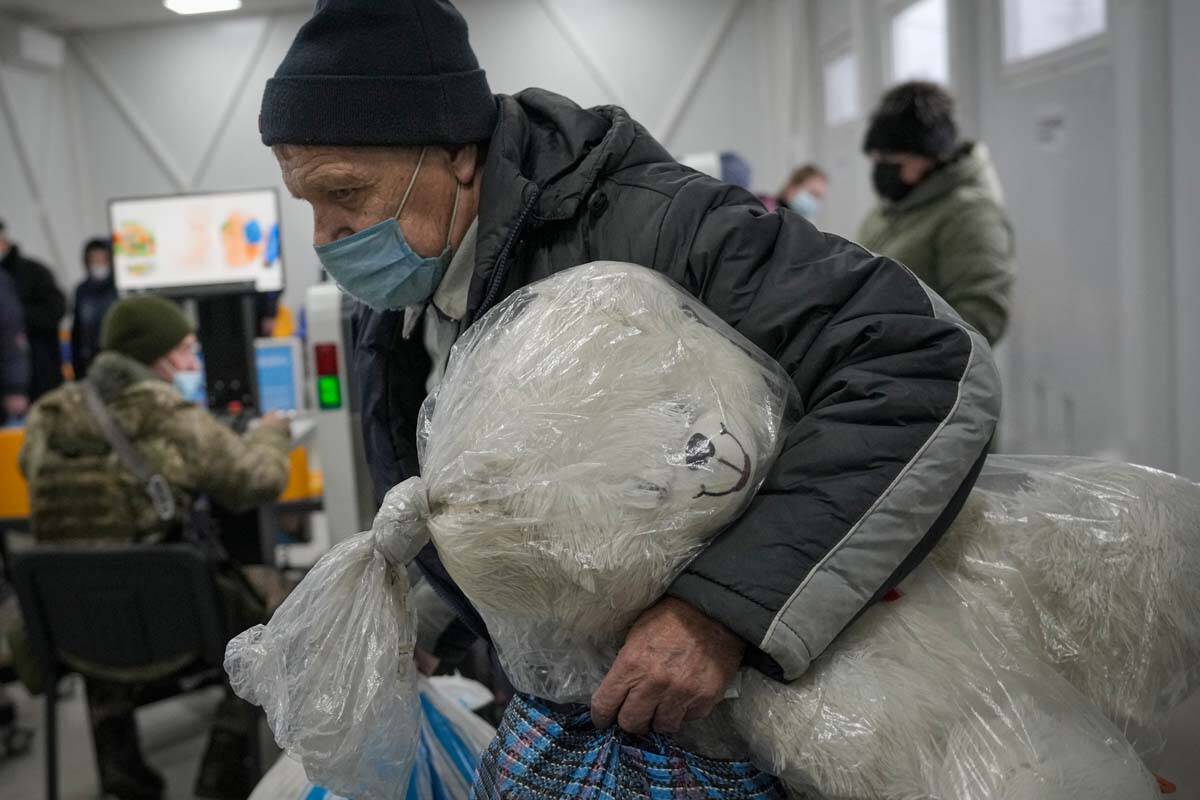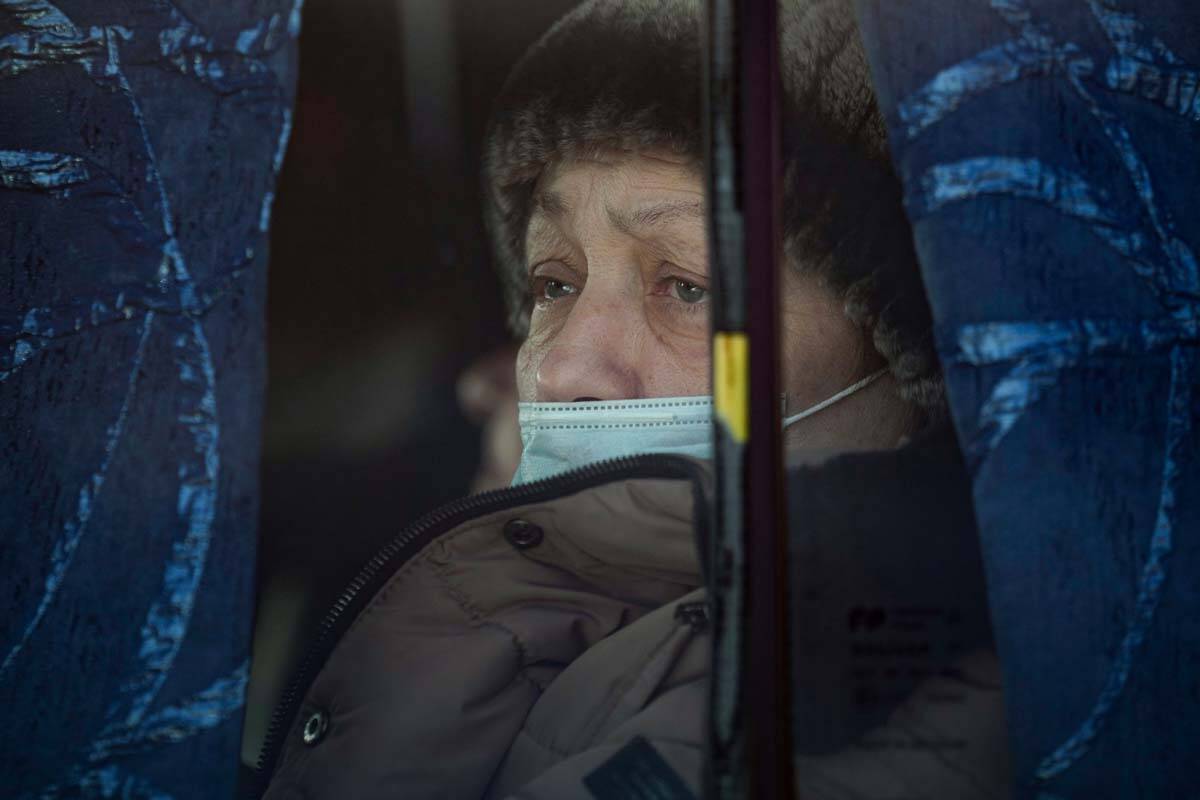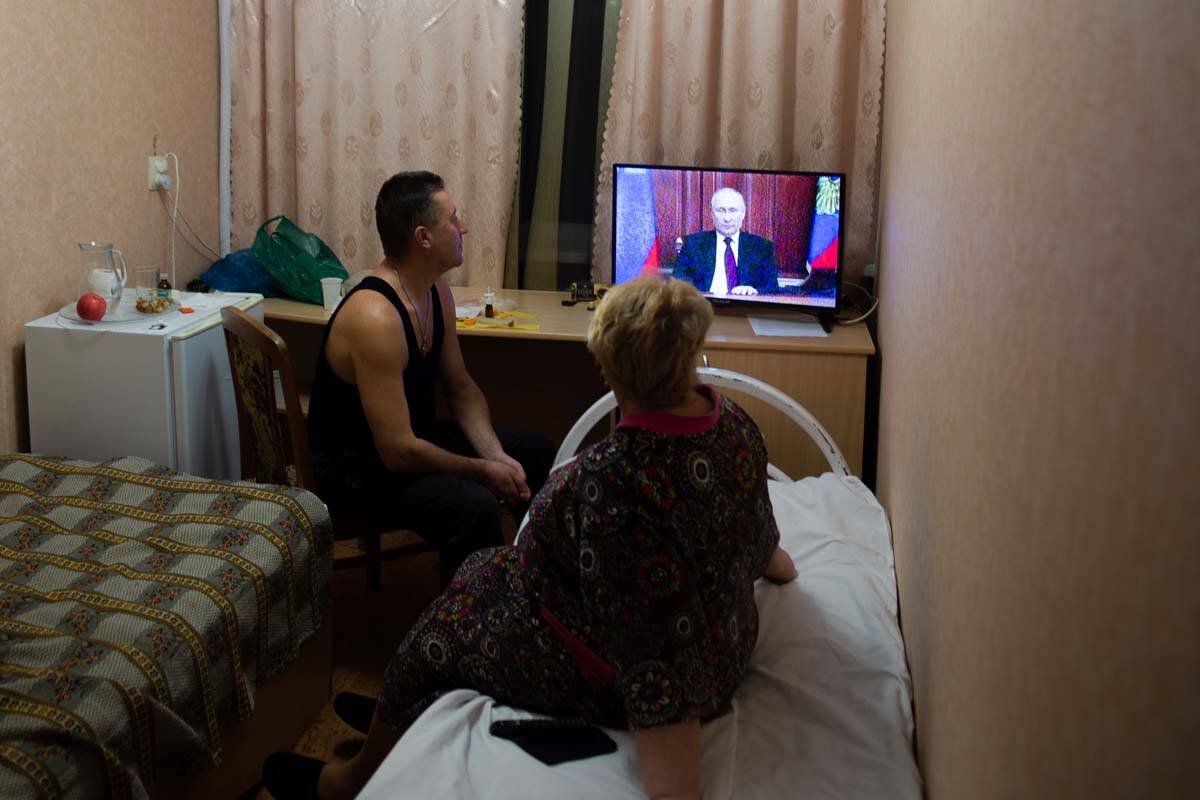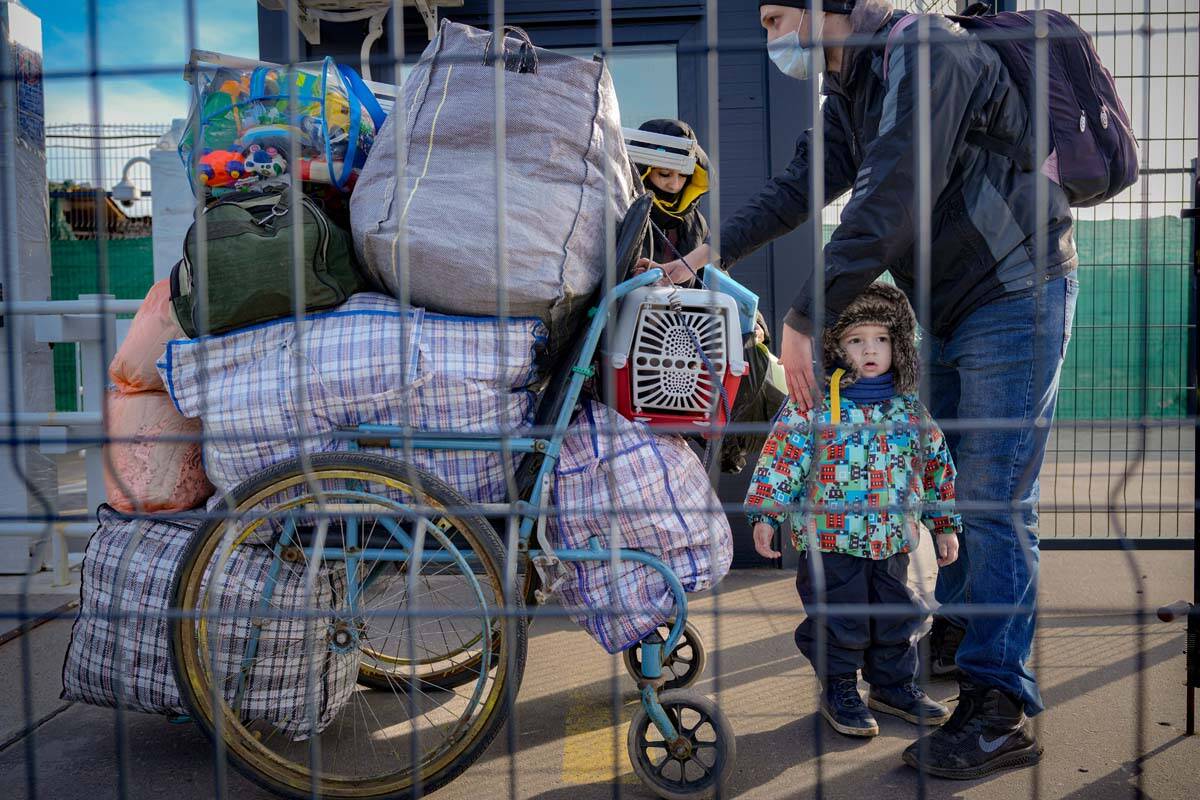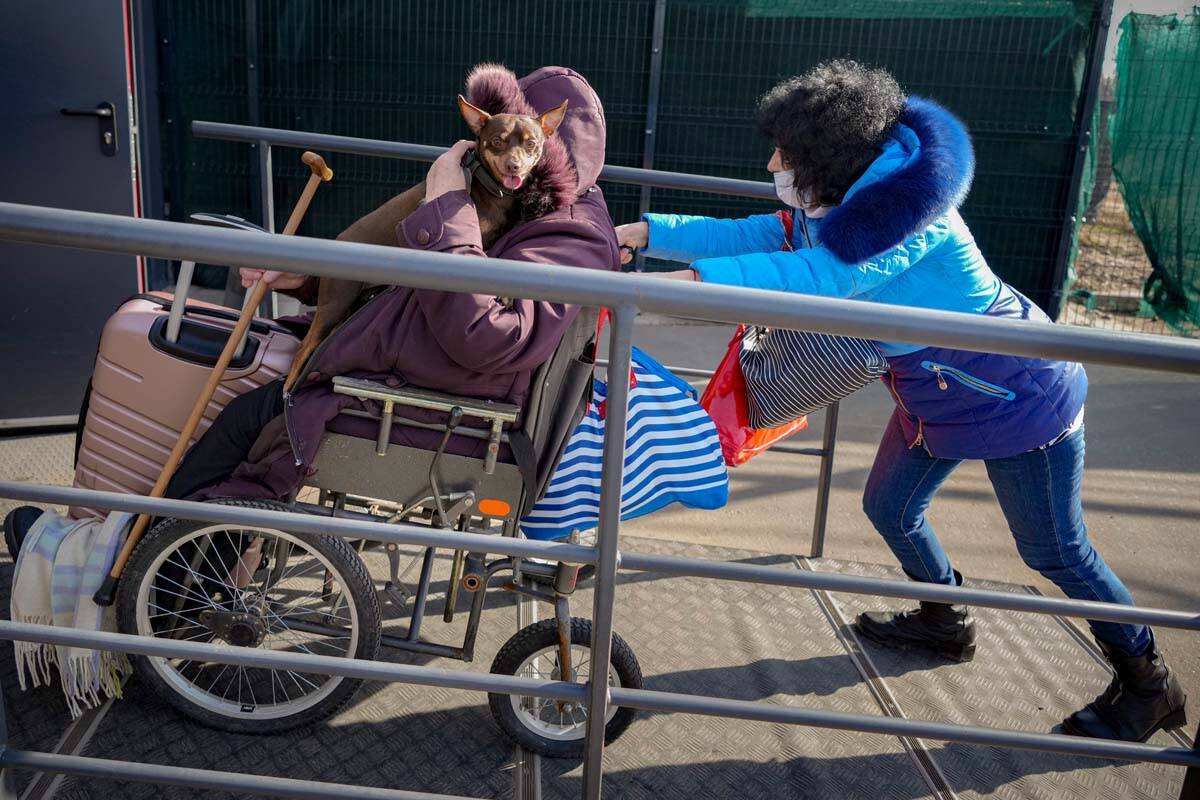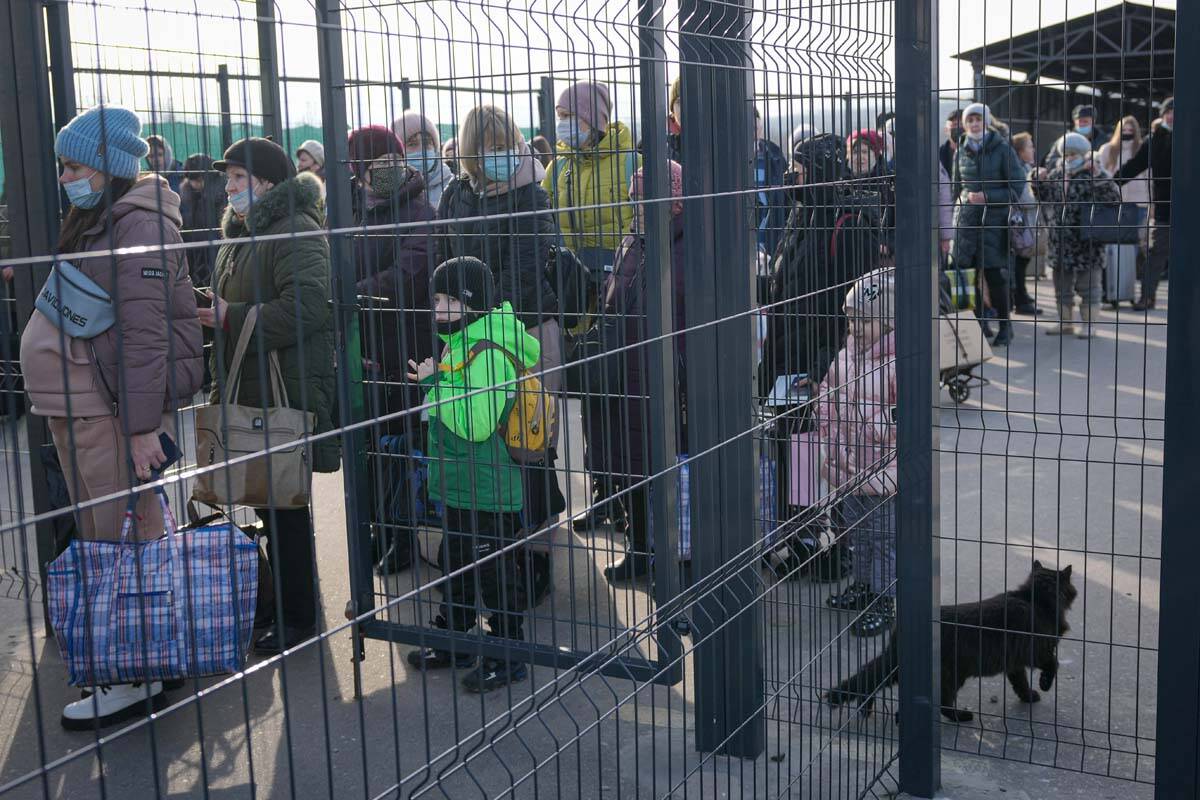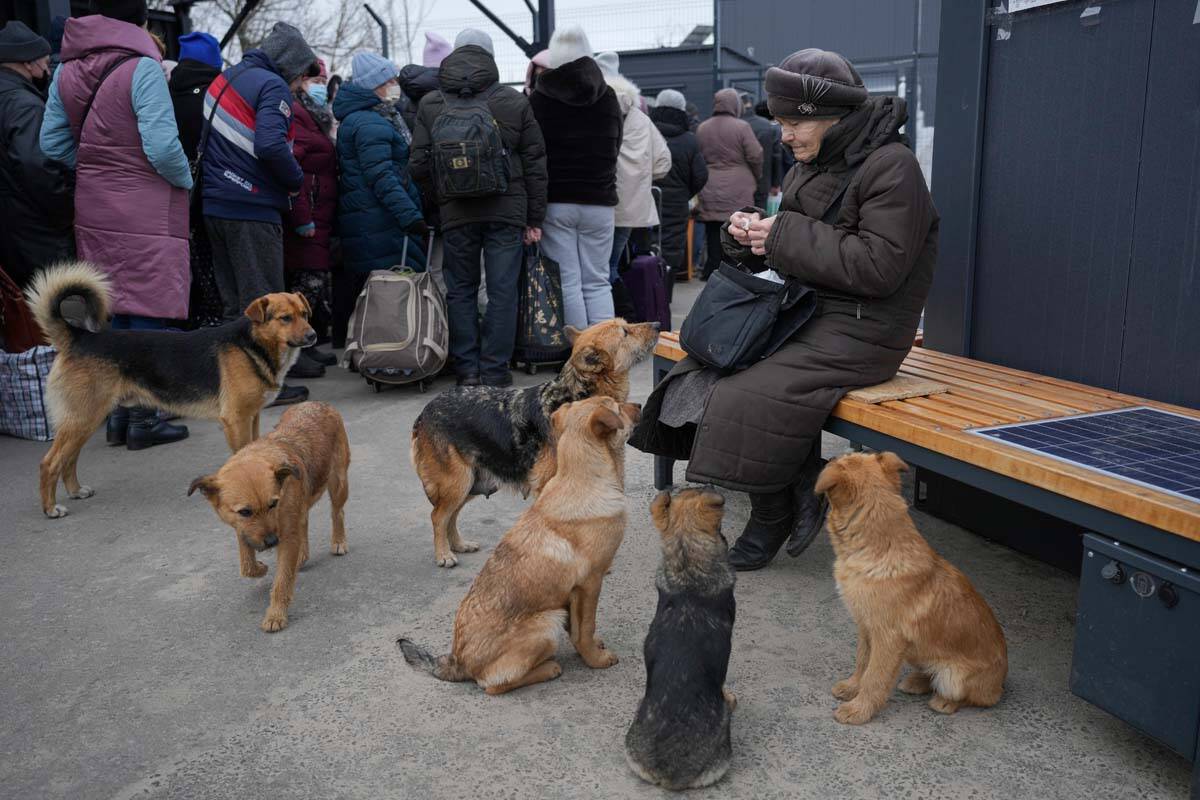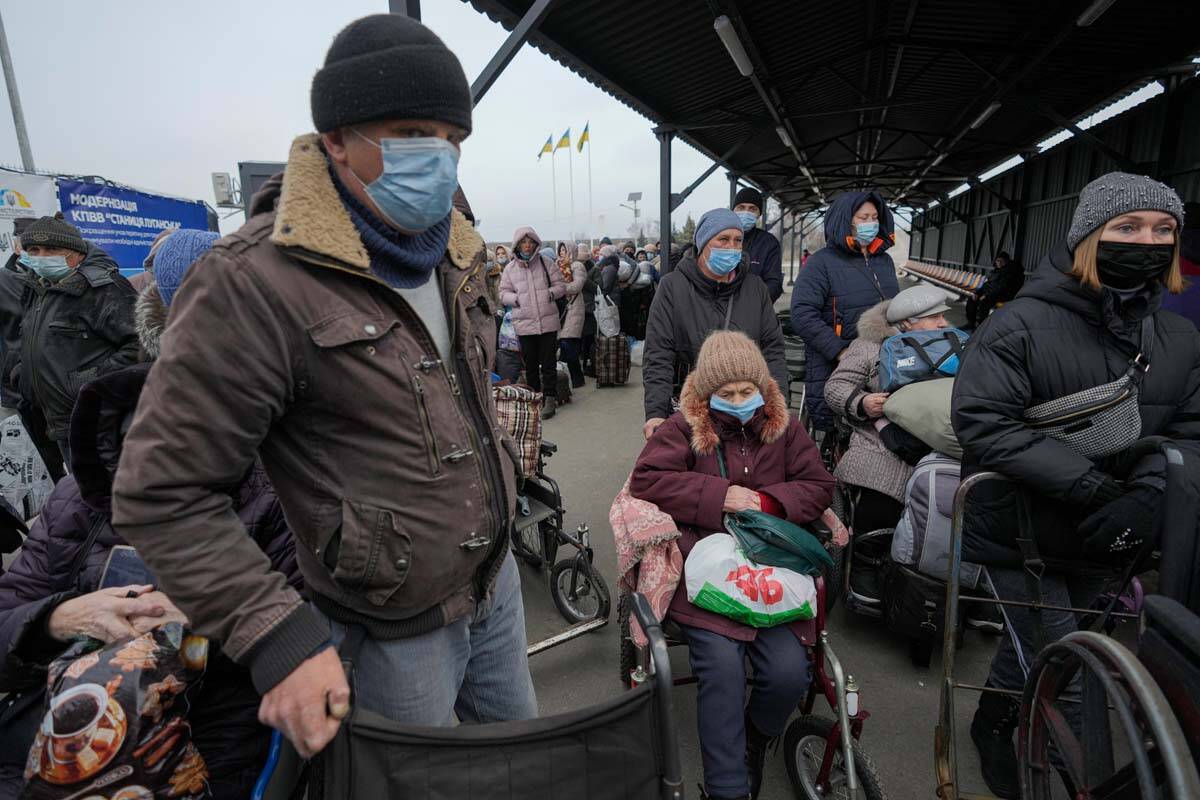Biden announces sanctions against Russian oligarchs, banks
MOSCOW — President Joe Biden ordered heavy U.S. financial sanctions against Russian banks and oligarchs on Tuesday, stepping up the West’s confrontation with Moscow, even as Russian lawmakers authorized President Vladimir Putin to use military force outside their country.
Biden, in a brief address from the White House, accused Putin of flagrantly violating international law in what he called the “beginning of a Russian invasion of Ukraine,” and promised that more sanctions would be coming if Putin proceeds further.
The president joined the 27 European Union members who unanimously agreed on Tuesday to levy their own initial set of sanctions targeting Russian officials over their actions in Ukraine. Germany also announced it was halting the process of certifying the Nord Stream 2 gas pipeline from Russia — a lucrative deal long sought by Moscow but criticized by the U.S. for increasing Europe’s reliance on Russian energy.
“None of us will be fooled” by Putin’s claims about Ukraine, the U.S. President said.
Biden said he was also moving additional U.S. troops to the Baltic states on NATO’s eastern flank bordering Russia. The prime minster of Estonia and presidents of Latvia and Lithuania on Friday had made a direct plea to Vice President Kamala Harris for the U.S. to step up its presence in the Baltics.
Biden said the U.S. would impose “full blocking” on two large Russian financial institutions and “comprehensive sanctions” on Russian debt.
“That means we’ve cut off Russia’s government from Western finance,” Biden said. “It can no longer raise money from the West and cannot trade in its new debt on our markets or European markets either.”
The president announced what he called a first tranche of sanctions as Russian troops rolled into rebel-held areas in eastern Ukraine after Putin said he was recognizing the areas’ independence on Monday. It was unclear how large the Russian deployment was, and Ukraine and its Western allies have long said Russian troops were already fighting in the region, allegations that Moscow always denied.
Members of Russia’s upper house, the Federation Council, voted unanimously to allow Putin to use military force outside the country — effectively formalizing a Russian military deployment to the rebel regions, where an eight-year conflict has killed nearly 14,000 people.
Shortly after, Putin laid out three conditions to end the crisis that has threatened to plunge Europe back into war, raising the specter of massive casualties, energy shortages across the continent and economic chaos around the globe.
Putin said the crisis could be resolved if Kyiv recognizes Russia’s sovereignty over Crimea, the Black Sea peninsula that Moscow annexed from Ukraine in 2014, renounces its bid to join NATO and partially demilitarizes. The West has decried the annexation of Crimea as a violation of international law and has previously flatly rejected permanently barring Ukraine from NATO.
Asked whether he has sent any Russian troops into Ukraine and how far they could go, Putin responded: “I haven’t said that the troops will go there right now.” He added that “it’s impossible to forecast a specific pattern of action –- it will depend on a concrete situation as it takes shape on the ground.”
The European Union soon followed, with a first set of sanctions aimed at the 351 Russian lawmakers who voted for recognizing separatist regions in Ukraine, as well as 27 other Russian officials and institutions from the defense and banking world. They also sought to limit Moscow’s access to EU capital and financial markets.
With tensions rising and a broader conflict looking more likely, the White House began referring to the Russian deployments in the region known as the Donbas as an “invasion” after initially hesitating to use the term — a red line that President Biden had said would result in severe sanctions against Moscow.
“We think this is, yes, the beginning of an invasion, Russia’s latest invasion into Ukraine,” said Jon Finer, principal deputy national security adviser, said on CNN. “An invasion is an invasion, and that is what is underway.”
The Biden administration’s rhetoric hardened considerably in less than 24 hours. The White House announced limited sanctions targeting the rebel-region Monday evening soon after Putin said he was sending troops to eastern Ukraine. A senior Biden administration official, who briefed reporters about the sanctions targeting the breakaway region, noted “that Russia has occupied these regions since 2014” and that “Russian troops moving into Donbas would not itself be a new step.”
The administration initially resisted calling the deployment an invasion because the White House wanted to see what Russia was actually going to do. After assessing Russian troop movements, it became clear it was a new invasion, according to a U.S. official who spoke on the condition of anonymity to discuss internal deliberations.
Biden on Tuesday said he was authorizing the redeployment of some U.S. troops who are already stationed in Europe to bolster the security of NATO’s Baltic allies, particularly in light of Russia’s troop build-up in Belarus.
Biden said, “These are totally defensive moves on our part” and the U.S. has no intention of deploying its forces in non-NATO-member Ukraine. But Biden also said the U.S. and its allies “will defend every inch of NATO territory and abide by the commitments we made to NATO.” The organization’s mutual-defense pact considers an attack on one member to be an attack against all.
For weeks, Western powers have been bracing as Russia massed an estimated 150,000 troops on three sides of neighboring Ukraine.
Western leaders have long warned Moscow would look for cover to invade — and just such a pretext appeared to come Monday, when Putin recognized as independent two separatist regions in eastern Ukraine, where government troops have fought Russia-backed rebels. The Kremlin then raised the stakes further Tuesday, by saying that recognition extends even to the large parts now held by Ukrainian forces.
Putin said Russia has recognized the rebel regions’ independence in the borders that existed when they declared their independence in 2014 — broad territories that extend far beyond the areas now under separatist control and that include the major Azov Sea port of Mariupol. He added, however, that the rebels should eventually negotiate with Ukraine.
Condemnation from around the world was quick. Ukrainian President Volodymyr Zelenskyy said he would consider breaking diplomatic ties with Russia and Kyiv recalled its ambassador in Moscow.
But confusion over what exactly was happening in eastern Ukraine threatened to hobble a Western response. While Washington clearly called it an invasion, some other allies hedged.
“Russian troops have entered in Donbas,” EU foreign policy chief Josep Borrell said in Paris. “We consider Donbas part of Ukraine.”
But he added: “I wouldn’t say that (it is) a fully fledged invasion, but Russian troops are on Ukrainian soil.”
Poland’s Defense Ministry and British Health Secretary Sajid Javid also said Russian forces had entered eastern Ukraine, with Javid telling Sky News that “the invasion of Ukraine has begun.”
Not all in Europe saw it that way. Spanish Foreign Minister José Manuel Albares noted “if Russia uses force against Ukraine, sanctions will be massive.”
The Kremlin hasn’t confirmed any troop deployments to the rebel east, saying it will depend on the security situation. Vladislav Brig, a member of the separatist local council in Donetsk, told reporters the Russian troops already had moved in, but more senior rebel leaders didn’t confirm that. Late Monday, convoys of armored vehicles were seen rolling across the separatist-controlled territories. It wasn’t immediately clear if they were Russian.
The White House issued an executive order to prohibit U.S. investment and trade in the separatist regions, and additional measures — likely sanctions — were to be announced Tuesday. Those sanctions are independent of what Washington has prepared in the event of a Russian invasion, according to a senior administration official who briefed reporters on the condition of anonymity.
The Russian moves pushed Germany to suspend the certification process for Nord Stream 2 pipeline that was to bring natural gas from Russia. The pipeline was built to help Germany meet its energy needs, particularly as it switches off its last three nuclear power plants and phases out the use of coal, and it has resisted calls by the U.S. and others to halt the project.
If Putin pushes further into Ukraine, NATO chief Jens Stoltenberg insisted the West would move in lockstep. “If Russia decides once again to use force against Ukraine, there will be even stronger sanctions, even a higher price to pay,” he said.
British Prime Minister Boris Johnson said the U.K. would slap sanctions on five Russian banks and three wealthy individuals. He warned a full-scale offensive would bring “further powerful sanctions.”
Even as alarm spread across the globe, Zelenskyy sought to project calm, saying in an address overnight: “We are not afraid of anyone or anything. We don’t owe anyone anything. And we won’t give anything to anyone.”
His foreign minister, Dmytro Kuleba, is in Washington to meet with Secretary of State Antony Blinken, the State Department said.
Russia has long denied it has any plans to invade Ukraine, instead blaming the U.S. and its allies for the crisis and describing Ukraine’s bid to join NATO as an existential challenge to Russia. Putin reiterated those accusations in an hourlong televised speech on Monday, when he announced that Russia would recognize the rebels.
“Ukraine’s membership in NATO poses a direct threat to Russia’s security,” he said.




